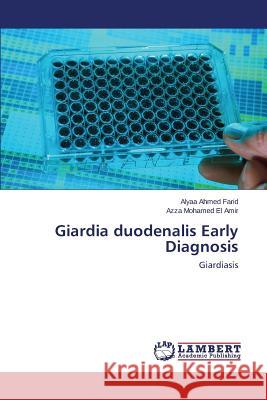Giardia duodenalis Early Diagnosis » książka
Giardia duodenalis Early Diagnosis
ISBN-13: 9783659801006 / Angielski / Miękka / 2015 / 76 str.
Giardia duodenalis (synonyms G. lamblia or G. intestinalis), the only species belonging to the genus Giardia found in humans, is a pathogenic protozoan with a worldwide distribution having a more relevant prevalence in warm climate and in children. G. duodinalis is a water-borne flagellated parasite that causes giardiasis in humans. In addition, giardiasis affects domestic and wild mammals "e.g., cats, dogs, cattle, deer, and beavers").In the diagnosis of Giardia, stool examination is the traditional, safest and easiest method. Microscopy of Giardia cysts and trophozoites is more straightforward, and there is little risk of confusion with other parasites. Moreover, only "ghost" cysts with an empty appearance are sometimes not recognized as Giardia parasites. And thus, it is recommended that at least three samples be examined in order to rule out giardiasis which is time consuming and delay the diagnosis. Also, its sensitivity depends on the burden of infection, the freshness of the specimen and the experience level of the microscopist. Stains are used to improve detection of specific organisms.
Giardia duodenalis (synonyms G. lamblia or G. intestinalis), the only species belonging to the genus Giardia found in humans, is a pathogenic protozoan with a worldwide distribution having a more relevant prevalence in warm climate and in children. G. duodinalis is a water-borne flagellated parasite that causes giardiasis in humans. In addition, giardiasis affects domestic and wild mammals "e.g., cats, dogs, cattle, deer, and beavers").In the diagnosis of Giardia, stool examination is the traditional, safest and easiest method. Microscopy of Giardia cysts and trophozoites is more straightforward, and there is little risk of confusion with other parasites. Moreover, only "ghost" cysts with an empty appearance are sometimes not recognized as Giardia parasites. And thus, it is recommended that at least three samples be examined in order to rule out giardiasis which is time consuming and delay the diagnosis. Also, its sensitivity depends on the burden of infection, the freshness of the specimen and the experience level of the microscopist. Stains are used to improve detection of specific organisms.











